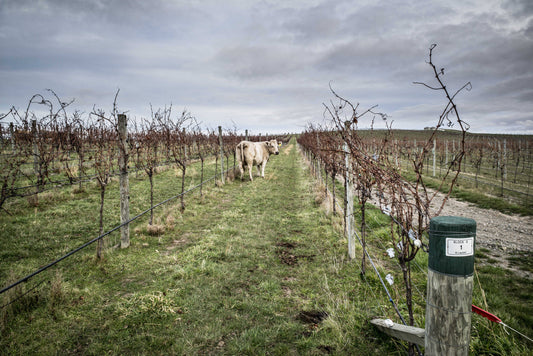| The vinous landscape of Roussillon has changed enormously in the last 20 years or so, and it’s now finally beginning to emerge from the shadows of the Languedoc and stand alone. Where once it was known for its sweet Vins Doux Naturel, it is now increasingly producing vins secs, as the locals call their unfortified wines. And where once cooperatives dominated the production, there is now an ever-growing number of small independent growers who have been lured by the enormous untapped potential of the region. Researching my latest book, The wines of Roussillon, I encountered many newcomers to Roussillon – both from France and from further afield – who had arrived within the last 10 years and who are excited by what the region has to offer.
They talked about the price of land. With the retirement of many cooperative members whose children do not wish to take over the family lands, there are vineyards of old vines for sale at affordable prices. For Dominique Génot at Mas LLossanes, it was the proximity of both the mountains and the sea that hooked him. So many fall in love with the wild landscape, dominated by the Pyrenees and its highest mountain, the Canigou. Cyril Fhal was brought up in the Limousin and came to Roussillon by chance: he too was captivated by the beauty of the surrounding countryside and stayed, founding the Clos du Rouge Gorge winery in 2002.
Land is cheaper in Roussillon than in the Languedoc, and the old vines – ‘that are part of our identity’, says Bastien Baillat of Domaine La Bancale in St Paul-de-Fenouillet – are more plentiful. Bastien comes from Normandy, while Joseph Paillé of Domaine Benastra comes from the Loire Valley, where his family are wine growers. Joseph appreciates the freedom of Roussillon. In the Loire, he was making the wine from 22 different appellations with just two grape varieties, Chenin Blanc and Cabernet Franc. In Roussillon there is a much greater choice of grapes to use, with many blend permutations possible and fewer appellation restrictions to get in the way.
For Vanessa and Matthieu Courtay of Mas de la Lune buying a vineyard in Roussillon represented a complete change of direction: Matthieu had spent 20 successful years in the film industry. The couple are now firmly committed to biodynamic viticulture, which is so much more feasible in the warm, dry conditions of Roussillon than in other parts of France. Paul Meunier, of Domaine Paul Meunier-Centernach, comes from Burgundy where his family have a wine estate in the Côte d’Or, but he was fascinated by port, which led him to the fortified wines of Maury, and then to the village of St-Arnac.
There are Bordelais here too. Caroline Bonville of Mas Karolina was brought up in Bordeaux, but she certainly could not afford to buy a vineyard there. Nor could her friend Dimitri Glipa of Mas Mudigliza in Maury. Marc Barriot of Clos de l’Origine comes from Bandol, where a hectare of vines would have cost him €200,000 as opposed to €10,000 in Roussillon. For him, the potential for making white wine in Roussillon was particularly exciting.
Although Roussillon does have appellations for its vins sec – Côtes du Roussillon and Côtes du Roussillon-Villages, Maury and Collioure, as well as the IGP Côtes Catalanes that covers most of the region – growers here are united in enjoying the freedom to experiment with their winemaking. A band of growers making natural wine are giving new energy to the village of Latour-de- France; others are experimenting with orange wines, not to mention concrete ‘eggs’ for fermentation and amphorae (the modern version) for ageing. If a wine does not conform to appellation regulations, then it simply takes on a lesser status and becomes ‘Vin de France’, thus avoiding any administrative hassle.
It will be fascinating to observe the continued evolution of what is still a relatively unknown wine region as it breaks away from its links to the Languedoc.
Rosemary George was one of the first women to become a Master of Wine, back in 1979. She is the author of 14 books, including The wines of Roussillon, The wines of the Languedoc and The wines of Chablis and the Grand Auxerrois. Her other specialist wine regions are Tuscany and New Zealand.
| 


